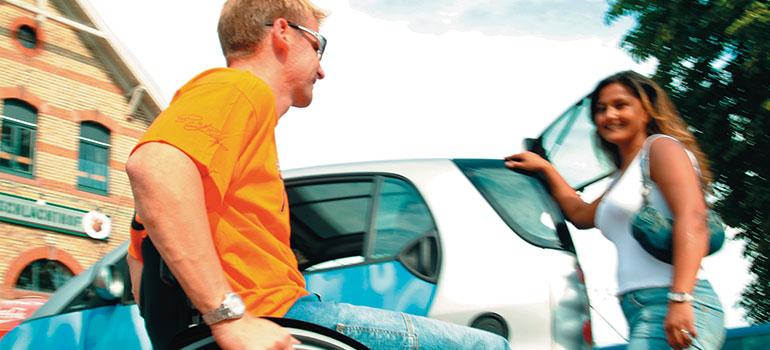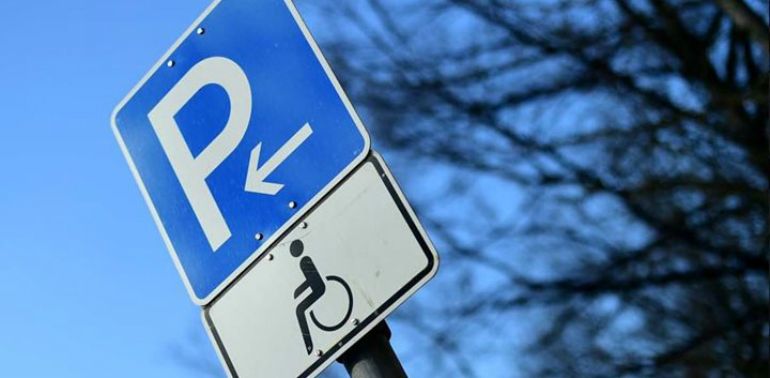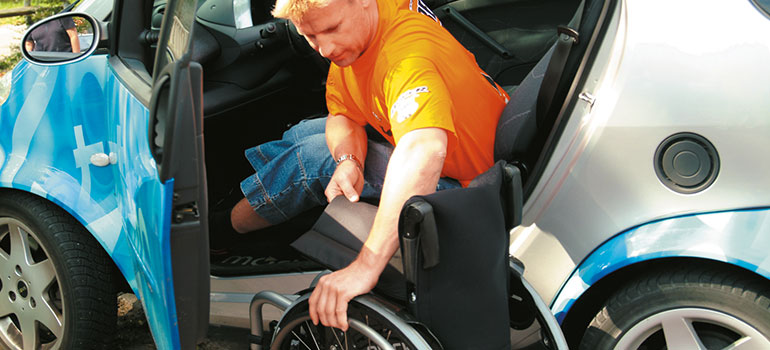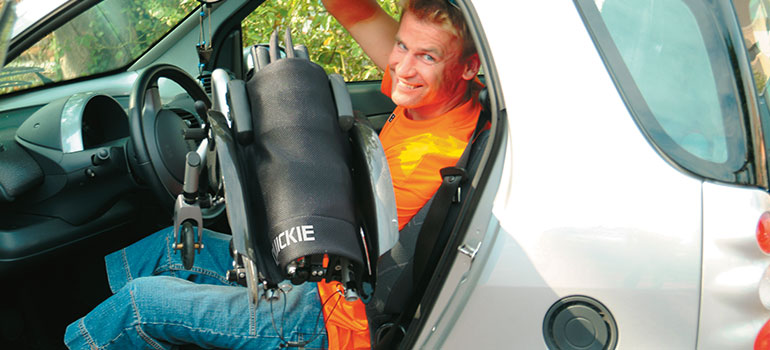Share:
Take it offline!
This Education in Motion resource is also available as a printable PDF.
Download PDF
In the UK, The Equality Act 2010, outlined some of the obligations local authorities, councils and car park operators have to make as reasonable adjustments for disabled people. The aim of these changes was to ensure that disabled people can have the same experience of a service as a non-disabled person. Or at least, as near to it as is possible. One of the ways local councils have taken this law into account is to offer disabled residents the chance to apply to have an advisory disabled parking bay put directly outside of, or near to their home.

Who is eligible to apply for a disabled parking bay?
In order to request a disabled parking bay you need to:
- Hold a Blue Badge.
- Live at the address where you want to have the bay.
- Not have any nearby off-street parking available to you. For example a garage or drive.
- Often use the vehicle you wish to park in the bay.
- Have difficulty parking near your home.

You have to meet this criteria for most councils to be able to consider your application. In England applicants are encouraged to apply online. You can download, print and complete a form, an application for an advisory disabled persons’ parking bay in Warwickshire, for example. The name of the form may vary across councils. Then you post it back to your council and wait up to two weeks for a response. In Cardiff, you are asked to ring up to request a form, or to fill in a contact form so that they can contact you. In Edinburgh you are asked to ring up and request an assessment directly, which may not be free. In order to compete forms like this you will need your Blue Badge number and the date of its expiration. In addition, you may be asked to provide a copy of the first two pages of your Vehicle Registration Certificate. You will also be asked for details of your vehicle and who drives it, and whether there is residential parking already available on your street.
You can look at Disabled Persons’ Parking Act for a detailed report on who applies, and what provision is usually made for disabled motorists in Scotland.
What happens after you apply?
Usually a visit to your home takes place to determine whether the council can offer you a bay. You will then receive a letter or other communication informing you of the council’s decision.

What are some of the reasons an application may be denied?
Assuming you meet all of the criteria set out above, your application for a parking bay may still be denied if:
- The bay would interfere with local planning.
- It would cause disruption to local traffic.
- Your address is on either housing society or association land.
- You intend to use the bay for either a mobility scooter or a Class 3 invalid carriage as bays are not provided for these kinds of vehicles.

If your home is on association or housing society land, you would have to talk directly to the operators of that land about parking arrangements. This land would be subject to the regulations governing private land verses publicly owned highways as set out by The Road Traffic Regulation Act 1984. This Act outlined the obligations of local authorities, private and business operators to make certain exemptions for Blue Badge holders.
What happens if your application for a disabled parking bay is successful?
If your application succeeds, your council may offer you a bay directly outside your home. If this option is not available, your council will try to offer you a space as near as possible to your home. The space offered to you is only advisory and therefore has no standing in law. This means that any disabled Blue Badge holder may park there. Non-disabled people are asked to park elsewhere but are not legally obliged to do so. White lines are there to let other motorists know the bay is intended for the use of a disabled resident.
You may also ask that your council paint white lines (or H-Bar markings) in front of an access way or driveway. It should be noted that any changes to the way the council manages traffic could mean that your parking bay is removed.
What are some of the rules and regulations governing disabled parking in general?
In the UK, The Road Traffic Regulation Act 1984 allowed for some exceptions to be made for people displaying a valid Blue Badge in their vehicles when parking on the street. These include:
- Allowing Badge holders to park for free for an unlimited time at ‘on street’ parking meters and pay and display machines.
- Allowing Badge holders to park without charge or time limit at ‘on street’ disabled parking bays, unless signs direct you otherwise.
If you are parking in an off-street car park, the same rules do not apply. Sometimes charges will apply, sometimes not. You will also need to make sure you are aware of any time limits in place determining how long you are allowed to park there for.
Displaying a Blue Badge will not always guarantee you the right to park somewhere for three hours, for example. You must follow any rules if a car park stipulates a different time limit or you will risk being issued with a parking ticket.

Another thing you should be aware of is that road systems which operate on private land adhere to a different set of rules from the main public highway. On private land, you are not allowed to park on yellow lines, unless the landowner has given you permission to do so. Off-street car parks and car parks on private land may be manged by a local authority, or by a private company.
If the car park on private land is manged by a local authority standard traffic laws would apply. However, if the land is owned by a private company the rules of Contract Law would apply and they will issue their own parking tickets in case of any violation of the restrictions that they have chosen to set. It is crucial to pay close attention to parking restrictions and to check for any signs when you park on private land which may be managed by a private operator. Shopping centres, supermarkets and sports centres would commonly use this type of car park.

Operators of car parks on private land must meet their obligations to make provision for disabled people under The Equality Act 2010. This means that they will not only have to make reasonable efforts to offer clearly marked bays for disabled people, but they may also be called upon to demonstrate the availability of these bays to disabled people in the event of an appeal.
Wherever you're travelling to, make sure you arrive in style and comfort with a Quickie wheelchair. Many of our powered wheelchairs, such as the Q700 M, can be fitted with a DAHL docking station to allow users to drive from the comfort of their powered wheelchair. The Quickie Xenon2 manual wheelchair is an ultra-light wheelchair that's easy to fold and transport. Or if you're looking for a scooter, the Sterling Sapphire2 can be easily loaded into your vehicle once disassembled.